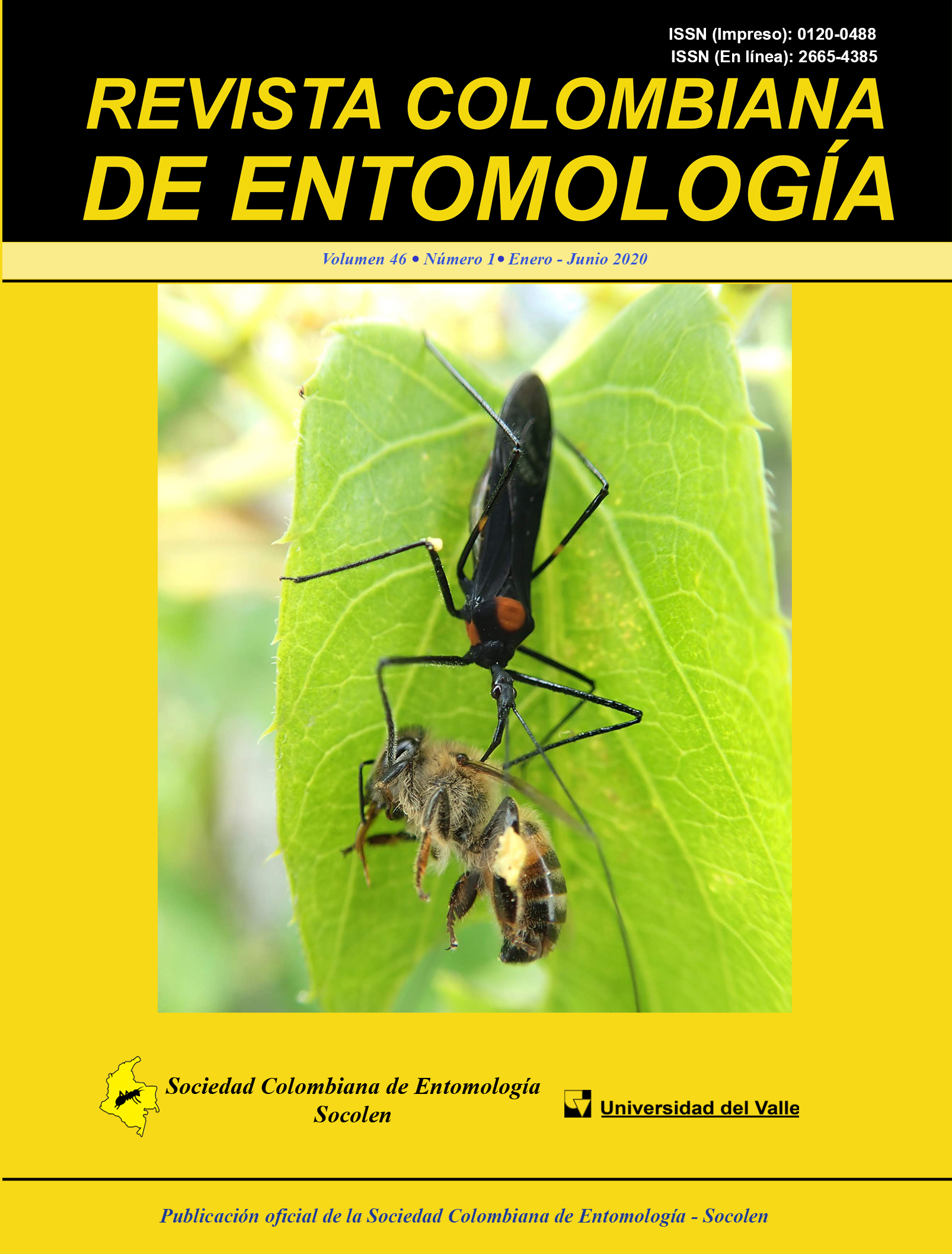Associated entomofauna with edible canna crops Canna indica (Cannaceae) in three areas of Colombia
Main Article Content
Edible canna (Canna indica) is a native crop from the Andes Cordillera and cultivated in Colombia to obtain starch from its rhizomes. Starch is used mostly as a raw material in biscuits and other local products for local and regional consumption manufacture. However, edible canna producers have shown recent concern about new pest effects that may be limiting crop productivity. This study aimed to identify the main insects associated with edible canna plants. Visits were made to production areas in departments of Cundinamarca, Huila, and Nariño. Several harmful Lepidoptera in their larval stage were identified, such as Glyphipterix sp. (Glyphipterigidae), Spodoptera sp. (Noctuidae), Calpodes ethlius and Cobalus cannae (Hesperiidae), and Ischnodemus sp. (Hemiptera: Blissidae). The emergence of adults of a parasitoid wasp of the family Ichneumonidae was observed from larvae of the microlepidopteran Glyphipterix sp. Two natural enemies of Ischnodemus sp., an egg-parasitoid wasp (Chalcidoidea), and the entomopathogenic fungus Beauveria bassiana were collected. Besides, other beneficial insects were collected. This information can serve as a basis for upcoming studies on the biology, and habits of the main insect pests of edible canna (Canna indica), as well as potential biological control agents to generate recommendations for control and management in edible canna crops.

This work is licensed under a Creative Commons Attribution-NonCommercial-ShareAlike 4.0 International License.
Authors retain the copyright on their work and are responsible for the ideas expressed in them. Once a manuscript is approved for publication, authors are asked for a publication license for the term of legal protection, for all territories that allows the use, dissemination and disclosure of the same.





